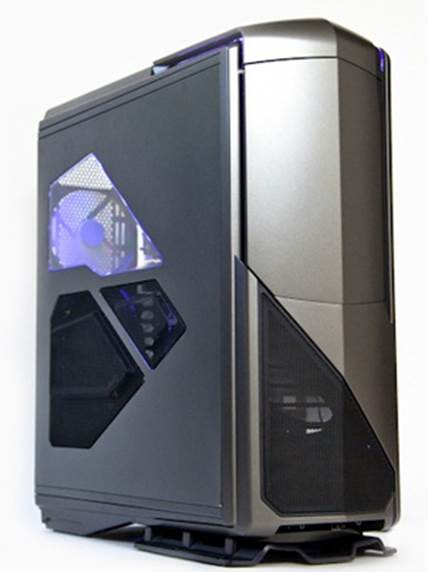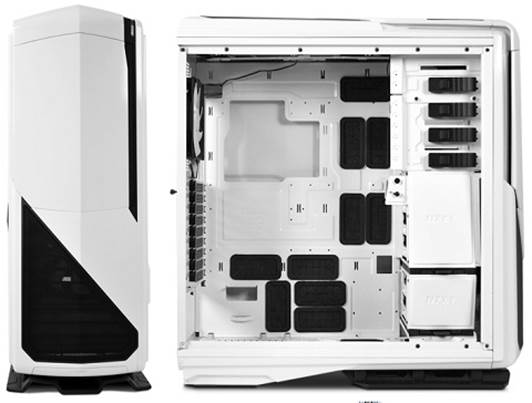Good looks, solid installation, a few
eyebrow-raising quirks
IF YOU’RE BIG on case lighting—you Cyton
fan, you—you’re going to absolutely love NZXT’s Latest Phantom chassis. It’s
rare to see such attention to detail paid to simple illumination, as with the
three separate strands of lighting found on the exterior, interior, and rear of
NZXT’s Phantom 820. Cooler still, you can manually cycle through a variety of
colors for the lights, so as to find the one that matches whatever mood you’re
in at any given moment.

NZXT
Phantom 820
Of course, a case is more than just its
Looks striking as the sharp angles might be on the various windows and grills
adorning this jet black chassis. Installation wise, stuffing parts into the
Phantom 820 is a pretty pain free process that leaves plenty of room for
advanced customizations by skilled system builders. We’re going to assume that
describes you, since your average DIV computer crafter isn’t Likely to buy a
$250 ticket to this case’s light show. Regardless of its redeeming qualities,
it’s a wee bit expensive.
The Phantom 820 comes with four 5.25-inch
bays, which alt lock your optical drives (or reservoirs) into place using handy
little plastic mechanisms instead of the screws we oh-so-hate. And we’re giving
special mention to the Phantom 820’s drive covers, which lock onto the sides of
the chassis using a spring-Loaded, front-facing switch instead of those often
finicky plastic tabs you know what we’re talking about.

The
case’s six hard drive bays use trays to secure your storage in place.
The case’s six hard drive bays use trays to
secure your storage in place. They all pull out on the right side of the
chassis, but with a caveat: Two of them can also be accessed by first pull-ing
out a compartment on the chassis’s left side. We don’t mind it much that you
have to pop off the nonstandard side of the case to access the drive bays, but
it would have been nice to be able to access all the drive bays from the case’s
Left side, as well.
While we Love the case’s built-in cable
management, including its jaw-dropping 10 rubberized holes for keeping cables
organized and tidy, we’re a Little displeased by how NXZT neglects to tell
users what all of the case’s supplemental cables are actually for.
For example, a built-in fan controller on
the top of the case (across from its two USB 3.0 ports and four USB 2.0 ports
allegedly controls fans you plug into certain connectors. We couldn’t get it to
work with any combination of fans we hooked up, nor does it appear to work with
the default case fans already wired on the Phantom 820. And don’t just assume
that the manual’s instruction of “plug in the Motex connector” is all you need
to do to get the case’s full light setup working: You have to connect your
front-panel headers and a supplementary SATA connector for the full,
controllable effect.
NZXT’s Phantom 820 is a strong contender
for your attention and wallet, especially if you prefer Looks over
functionality. At this price, however, you should be looking for a case that
nails both categories flawlessly: The Phantom 820 is close, but not tiptop.